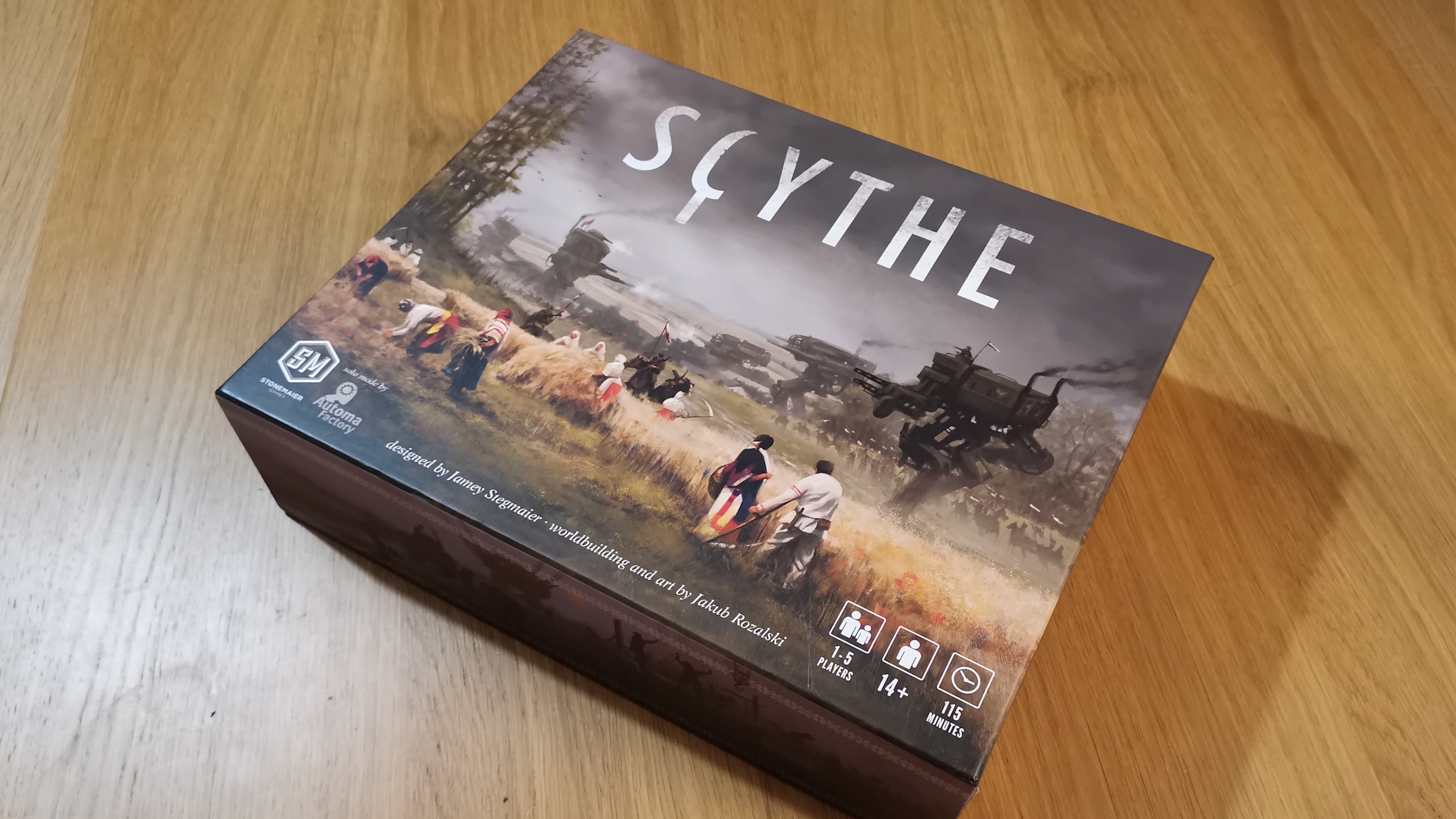GamesRadar+ Verdict
The Crucial T500 improves the performance of the now discontinued P5 Plus, but the manufacturer has found itself in a more competitive segment of the market, and it doesn’t stand out quite as much as it did. This isn’t the best SSD out there, but it’s far from the worst. The biggest issue with it may be temperature control, but frequent deals and bundles do make it a tempting storage device.
Pros
- +
Solid speeds in a gaming PC
- +
PS5 performance is okay
- +
Reasonable pricing, but frequent deals
Cons
- -
Temperature control issues
- -
PS5 speeds could be better
Why you can trust GamesRadar+
The Crucial T500 is the evolution of one of the first SSDs I ever went hands-on with, the Crucial P5 Plus. That drive represented a superb entry point into modern storage devices because, with read/write speeds of 6,800MB/s and 5,000MB/s respectively, it offered gamers a chance to reap the benefits of NVME PCIe Gen 4 technology without breaking the bank.
The P5 Plus has sadly been discontinued now, and has had to be removed from our best SSD for PS5 list as the best budget option. The T500 looks to replace it, but after testing it out, it doesn’t fill that same gap in the market. Instead, this is taking aim at the biggest guns of the Gen 4 M.2 arena.
Available in 500GB, 1TB, 2TB, and 4TB sizes, both with and without an integrated heatsink, it feels geared at PS5 players most of all. SSD MSRPs are about as trustworthy as Donald Trump’s Springfield pet-eating theories, but regardless, the 1TB T500 will set you back around $79.99 / £79.99 at the time of writing if you don’t opt for an integrated heatsink. Go for the PS5 no-faff option, and you’ll need to spend $89.99 / £89.99 on average. I tested the 2TB heatsink model for this review.
Design
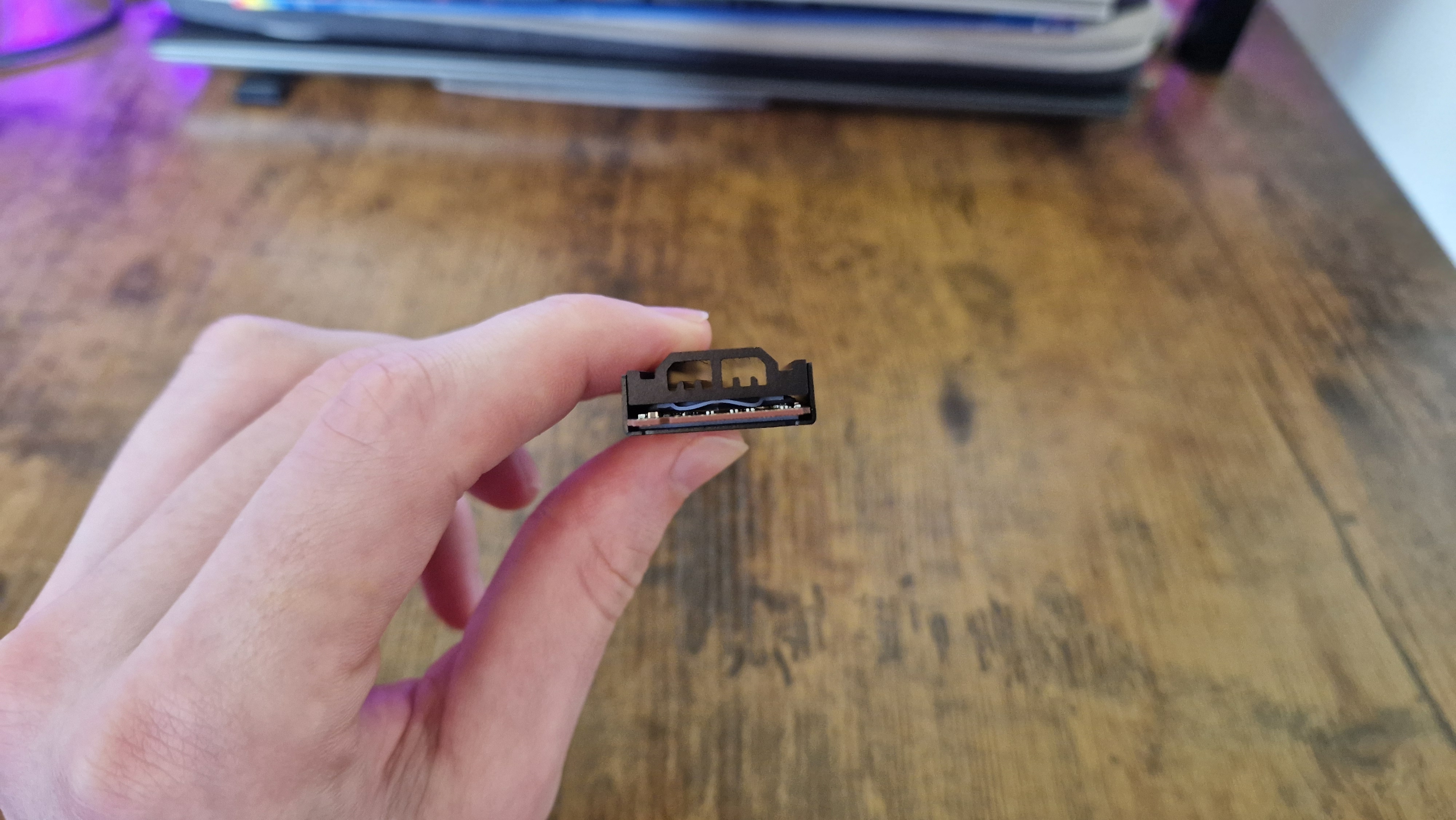
For folks like me who were big fans of the Crucial P5 Plus, the design of the T500 made me think it was just a rebranding to begin with. All Crucial SSDs look identical these days, but the T500 looks almost exactly like the P5 Plus. All black and sporting a blocky, rectangular heatsink, the T500 is about as basic as these drives get in terms of aesthetics.
That is, besides a breathing space in the middle of its heatsink that’s supposed to give it some additional airflow, but I’m not totally convinced this particular design actually does. Some of the best SSDs for gaming have spaces in between their heatsink panels, but in testing, this one didn’t have the same effect as the Corsair MP600 Elite, for example, which stayed incredibly cool under pressure.
In practical terms, the T500 slots into an M.2 port with no bother at all, and sports the same 2280 form factor most of its competitors do. There’s some minor white branding on the top and bottom of the drive that labels what it is, but I don’t think these Crucial by Micron liveries are ever offensive. The white text here pops off the surface and gives it some character which otherwise feels absent compared to other manufacturers who give their heatsinks a bit more pizazz.
Looks don’t tend to matter too much with SSDs anyway, since if you’re going to use them in the PS5 you won’t see them. If you’re slotting this into one of the best gaming PCs, you’re not going to be adding to your collection of RGB parts, but it does sort of look like something that would fit onto Christian Bale’s Dark Knight utility belt.
Weekly digests, tales from the communities you love, and more
Features
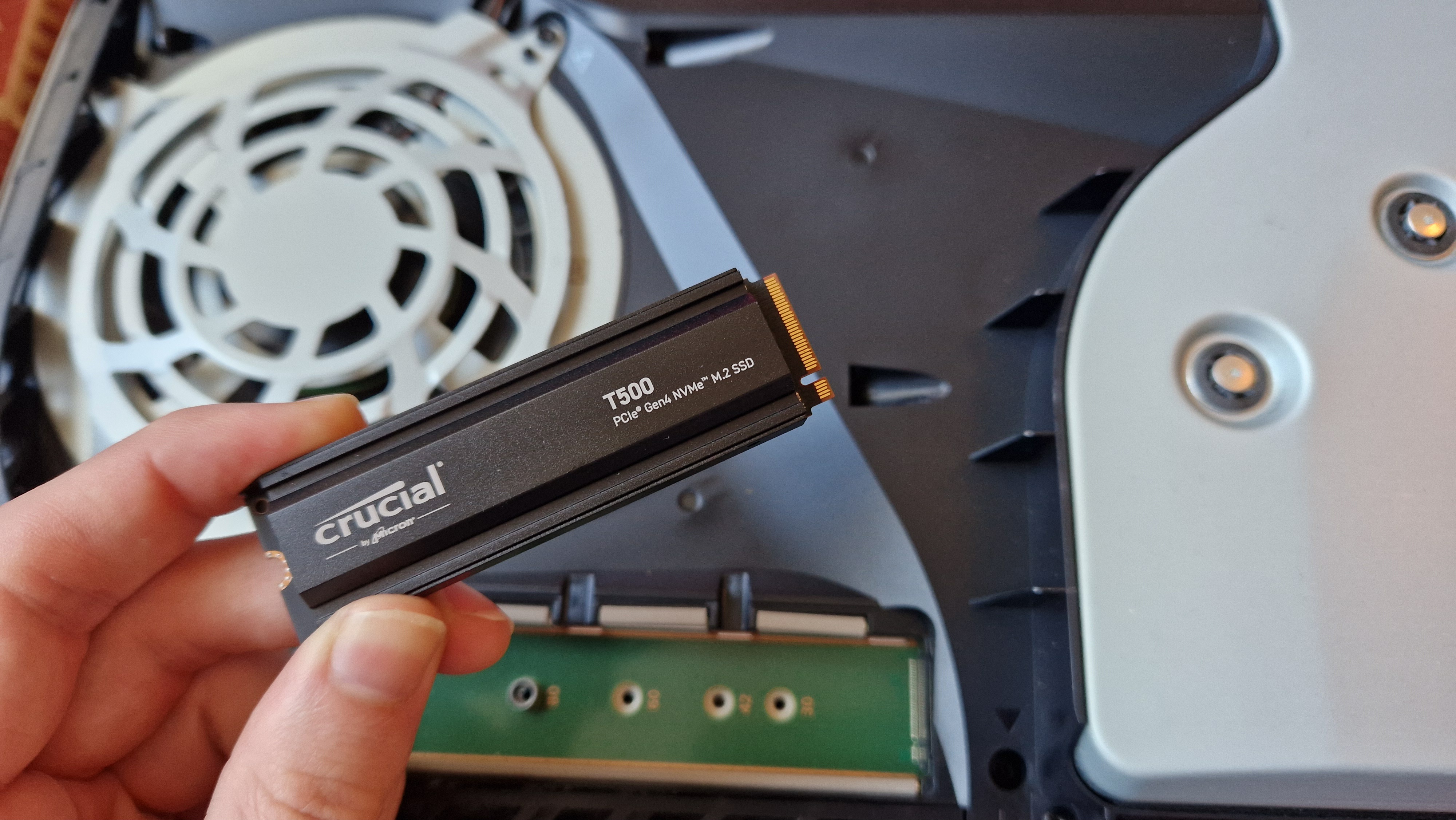
The Crucial T500 features advertised read and write speeds of 7,400MB/s and 7,000MB/s respectively, which are fairly hefty claims considering the likes of the Seagate Firecuda 530 and even the Samsung 990 Pro are pretty much the only options known to hit those marks consistently. This is a drive that wants to tap out its NVMe PCIe Gen 4 interface, but based on its Gen 5 cousin, the Crucial T700 Pro, I didn’t think that was outside the realms of possibility.
Each purchase of this drive comes with a five-year limited warranty, which is a nice touch. The endurance of this drive goes all the way up to 1,200TB though, so I doubt you’ll need to make use of that warranty for wearing out its lifespan.
According to Crucial, the T500 should be able to load games like Call of Duty, Forspoken, and Valorant 16% faster than the P5 Plus and other Gen 4 SSDs can while outputting a 40% higher performance-to-power ratio. Granted, Crucial gives all the necessary caveats to say that your actual performance may vary, but I was intrigued to put these claims to the test.
Performance
Reviewing an SSD like this can be tough, because all of the promises a brand makes in their advertising and packaging should always be thought of more as ceilings of what their device is capable of, rather than a guaranteed benchmark of what they’ll achieve. So, when I tell you I’m a bit disappointed that all of Crucial’s performance claims haven’t been met by my testing process, it’s all relative because the Crucial T500 is still a pretty great SSD.
Slotting this drive into one of our testing PCs brought about some intriguing results. Three CrystalDiskMark benchmarking tests produced an average sequential read speed of 7,102MB/s and a sequential write of 6,860MB/s. As the observant among you will realize, this is a fair few MB/s off the advertised ceilings on the box - moreso than the top three Gen 4 Drives we’ve tested thus far, the MP600 Elite, FireCuda 530, and Samsung 990 Pro. In fairness, the T500 surpassed the Nextorage NEM-PA Series, which failed to get over the 7,000MB/s read mark. Interestingly, the T500 didn’t blaze past the SK Hynix Platinum P41, even if it was tested in a different system. The P41 got a trailblazing 7,206MB/s read speed but was let down by its write speeds, which were down at 6,178MB/s.
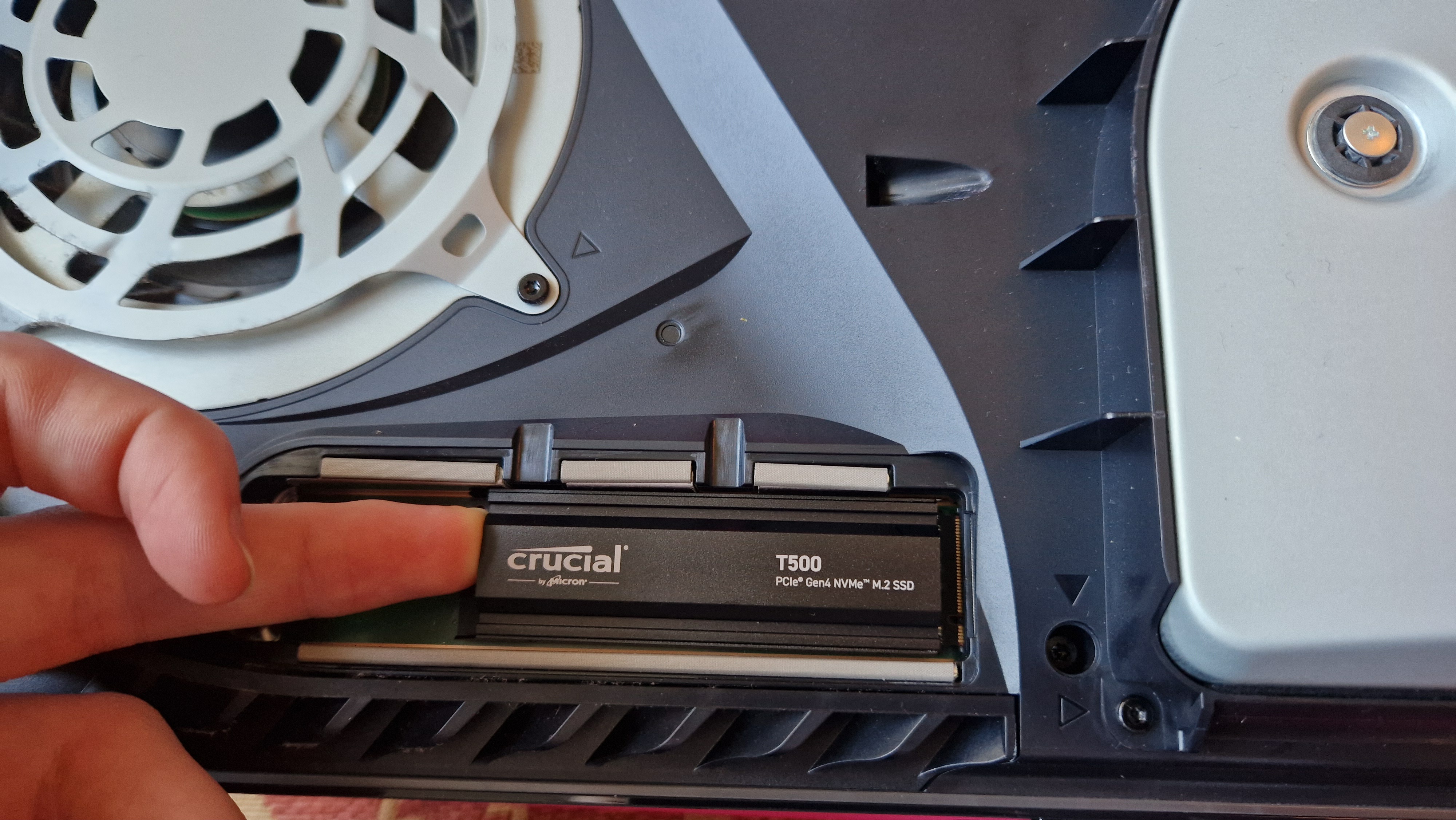
Overall, the T500’s CrystalDiskMark scores show it as a solid mid-ranger, but one that gives a nice balance between read and write speeds, where other drives either focus on one or the other or fail to bring both up to this kind of standard.
The biggest issue I found while testing this drive, however, was its temperature control. After doing my benchmarking in a PS5, which I’ll come onto momentarily, I did think the drive felt a bit warmer to the touch than others with integrated heatsinks I’ve reviewed. Our testing rig only confirmed this though, because an ambient temperature of 29 degrees Celsius on a motherboard increased to 57 degrees after two CrystalDiskMark tests. This certainly explained why the drive’s third set of test results was its lowest, as temperature was clearly preventing efficiency.
If you do want to bag yourself Crucial’s T500, maybe think about getting the version without a heatsink, and either using your motherboard’s included heatsink options or buying a heatsink separately to slap on top of it.
Inside the PS5, I found similarly mixed results. The console’s formatting benchmark test came back to me with a sequential read speed of only 5,571MB/s. Don’t get me wrong, the PS5 always undercuts the true power of Gen 4 SSDs like this, mainly because its motherboard can’t divert power to its secondary M.2 bay like a gaming PC can. Still, this seemed like a really low score for a drive that boasts advertised speeds of 7,000MB/s+ on its box.
Luckily, general use tests found it was still capable in Sony’s console. It wasn’t quite as fast as the MP600 Elite in this regard, but it performed my God of War transfer test adequately. 48GB of Sony Santa Monica’s 2018 classic shifted from the console’s internal drive to the Crucial T500 in just 18 seconds, then back to the console in three minutes and eight seconds.
For those who just want a broad idea of how all these performance figures scale up to load times in actual video games, I did our patented loading time stopwatch tests. Now, keep in mind that these tests aren’t perfect, and don’t account for human error (even if I’m pretty confident in my reaction time). These tests look at how a drive like this can serve you when you’re gaming with a PS5, and give a broad outline of how they can load up a large-scale multiplayer game, a slower game from last generation, and one that loads quickly anyway.
| Game | Loading time |
| God of War | 26 seconds |
| GTA Online | 55 seconds |
| Outer Wilds | 6.29 seconds |
As you’ll likely agree, these are respectable loading times, especially inside the PS5. Still, it’s important to note that you can pay a similar amount for Corsair’s MP600 Elite and get better loading times. That drive managed to boot up GTA Online in 48 seconds, and the Outer Wilds in 5.5. In fairness, will you really notice those extra few seconds? Arguably not, but if you can pay a similar amount of money for better results, you may want to.
Should you buy the Crucial T500?
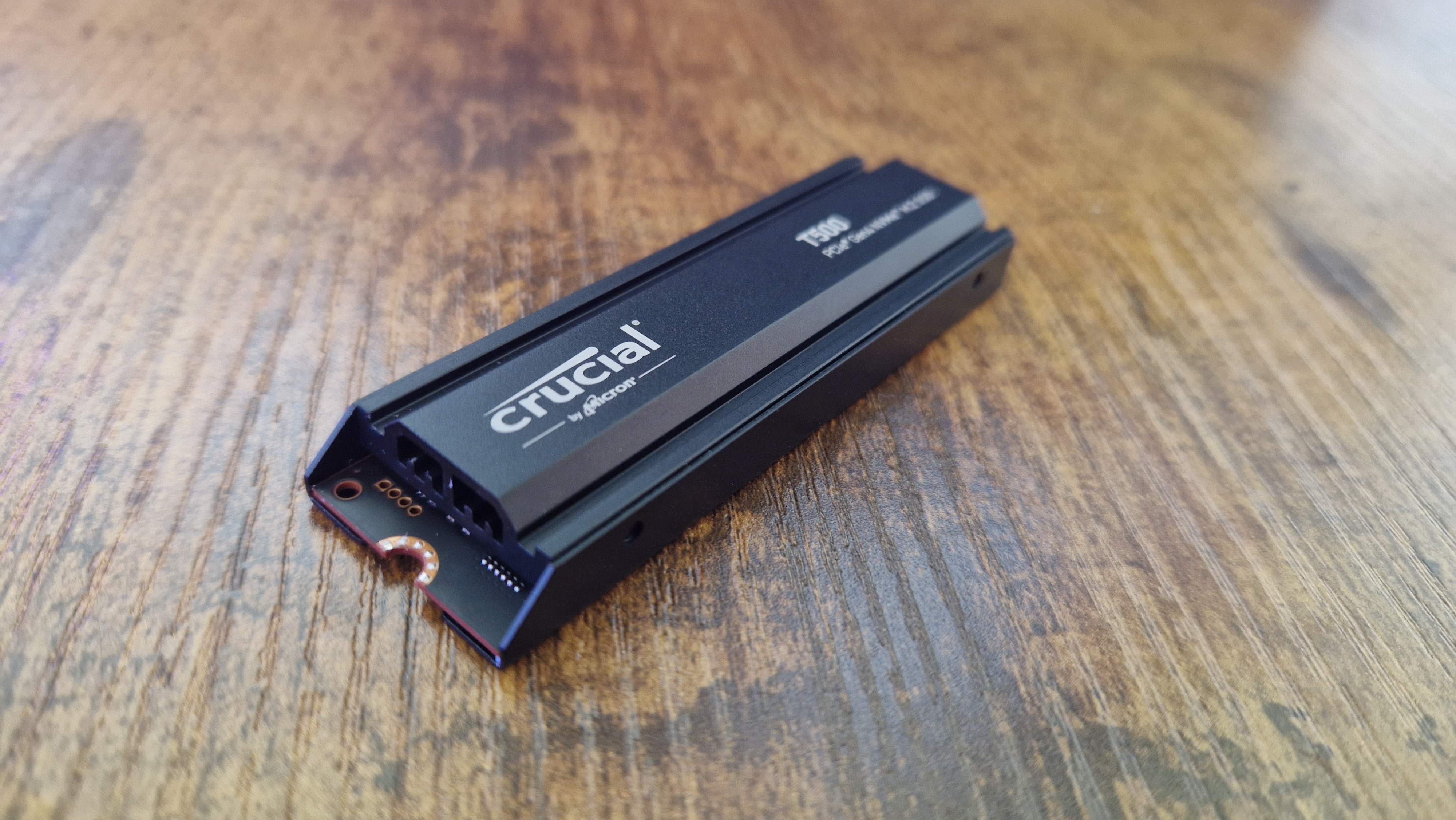
Overall, the Crucial T500 is a solid mid-ranger in the current Gen 4 SSD market. In some ways, it feels like the brand shooting itself in the foot, though. The P5 Plus was an amazing budget option, but at the highest end of the market, this doesn't stand out in the same way. It especially doesn’t inspire the same confidence in me when used in the PS5, even if its general use tests weren’t that far off the best I’ve tested this year. Still, the T500 is more than capable of extending the internal storage of the PS5, or indeed the PS5 Pro.
As our testing shows, the real benefits of this device come out when used in a gaming PC, but I’d issue a word of warning about the temperature control here. If you go for the model with an integrated heatsink, you’re going to be stuck with the sort of temperatures I came across, most likely. If you do want to bag yourself Crucial’s T500, maybe think about getting the version without a heatsink, and either using your motherboard’s included heatsink options or buying a heatsink separately to slap on top of it.
One of the reasons I would recommend this drive is because I frequently get contacted by Crucial’s PR, who tells me about solid bundles and free games that come with a purchase of one of the brand’s storage devices. Beyond price cuts, which Crucial can be generous with most of the time, these are a welcome bonus, especially when the performance disparity between this drive and its rivals is fairly minimal. A free game along with this drive would certainly ease my sadness about the Crucial P5 Plus being discontinued.
How I tested the Crucial T500
I put the Crucial T500 through the wringer in one of our testing PCs, as well as my PS5. I used CrystalDiskMark to take three benchmark scores of its sequential read and write speed, as well as the PS5’s internal formatting test. I kept an eye on temperatures through Windows 11, after a quick handling test to see how warm the drive was becoming under strain.
I then used the PS5 to transfer data back and forth from the drive to the console, keeping note of the time it took. Then, I loaded up three separate games, three times each, and took note of the loading times with a stopwatch. I then took an average of all the times before presenting the results in this review. For more on how we test SSDs, check out the full GamesRadar+ Hardware Policy.
For more storage, check out the best external hard drives for gaming, the best PS5 external hard drives, and the best Xbox Series X hard drives.
One of my earliest memories is playing SuperMario64 and wondering why the controller I held had three grips, but I only had two hands. Ever since I've been in love with video games and their technology. After graduating from Edinburgh Napier University with a degree in Journalism, I contributed to the Scottish Games Network and completed an Editorial Internship at Expert Reviews. Over the last decade, I’ve been managing my own YouTube channel about my love of games too. These days, I'm one of the resident hardware nerds at GamesRadar+, and I take the lead on our coverage of gaming PCs, VR, controllers, gaming chairs, and content creation gear. Now, I better stop myself here before I get talking about my favourite games like HUNT: Showdown, Dishonored, and Towerfall Ascension.

